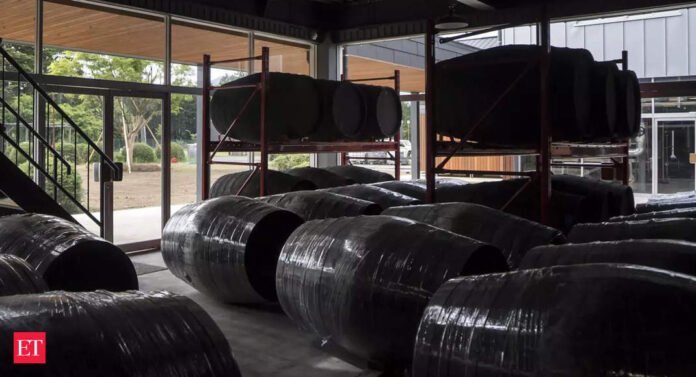The government has been aiming to increase the share of biofuels in the transportation sector to cut the country’s dependence on oil imports, which account for 85% of the domestic needs. Petrol makes up 15% of total oil consumption in the country and therefore a 10% substitution by ethanol could bring down oil imports by 1.5 percentage points.
As more supplies become available, the blending ratio is expected to reach 10% this ethanol year, which began last month. This is about two decades after ethanol blending was piloted in the country. “Limited supply was the biggest constraint. The government has addressed this by providing a supportive policy regime,” said Abinash Verma, director general, Indian Sugar Mills Association (ISMA).
One of the most important steps has been to have fixed prices based on feedstocks used to produce ethanol, and these prices don’t vary with global petrol prices. An ambitious blending target needed distilleries to expand capacity for which the central government provided generous interest subvention. This was further supplemented by a variety of capital support from different state governments.
Another big move was to widen the scope of raw materials used for producing ethanol by including sugar, sugar syrup, surplus rice, and maize. “Inclusion of grains helped take ethanol production to several other states. Earlier it was mostly limited to UP, Maharashtra and Karnataka that have large sugarcane crops,” said Verma of ISMA.
The government also eased green rules to help compress the time consumed in taking clearances for expansion. The molasses-based ethanol production facility has risen from 228 crore litres per annum in 2016-17 to 520 crore litres now, per ISMA.
Expansion in capacity has been aided by offtake guarantees by oil marketing companies, an oil company executive said. Oil companies’ willingness to sign tripartite agreements with ethanol suppliers and lenders further helped.
Ease of ethanol purchase tender conditions, favourable transportation rate, and reduction in security deposit also gave distillers great confidence.
India aims to further boost ethanol production to be able to take the blending ratio to 20% by 2025. To facilitate this, distilleries, as well as oil marketing companies, will need to build additional storage whereas fuel retailers will need to set up new dispensers so that drivers have a choice to take fuel blended with 20% ethanol or less based on their car’s ability.
The above news was originally posted on economictimes.indiatimes.com





